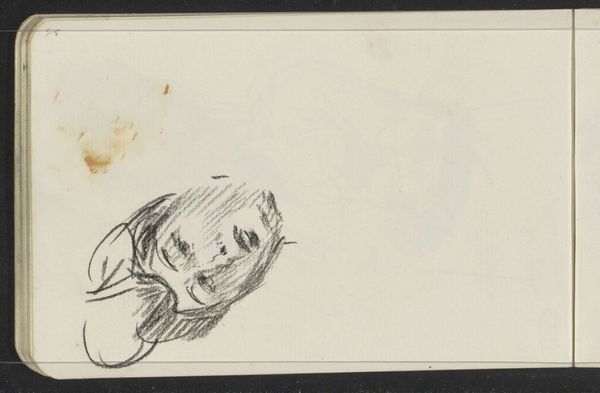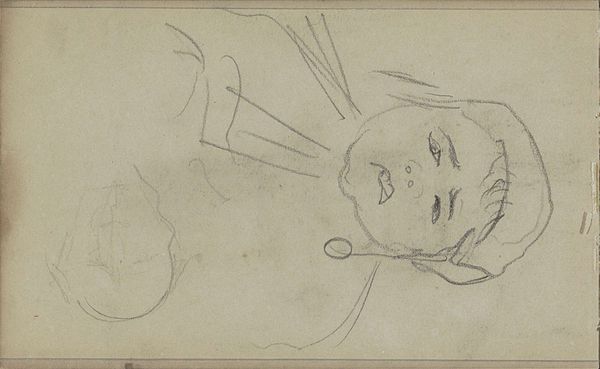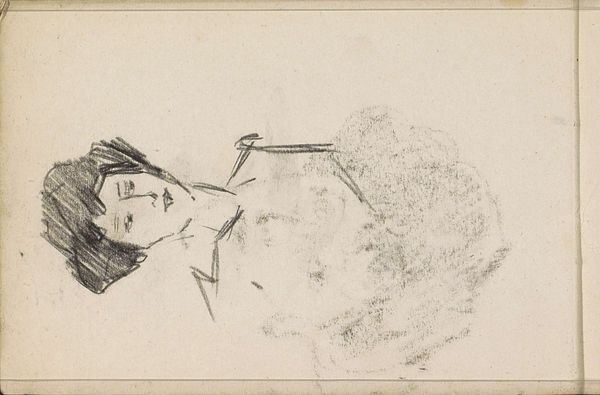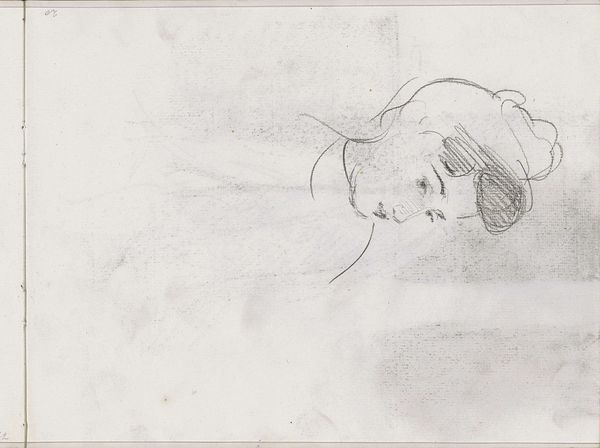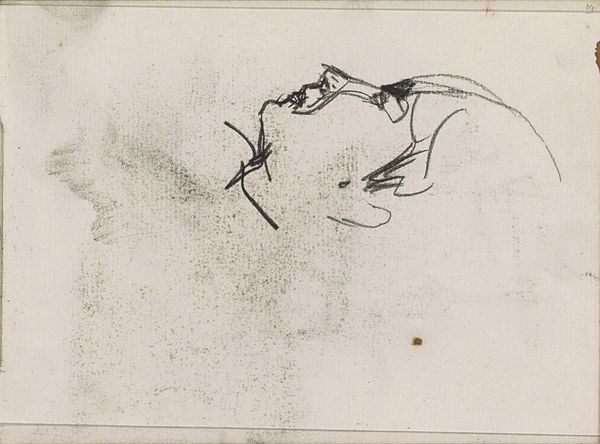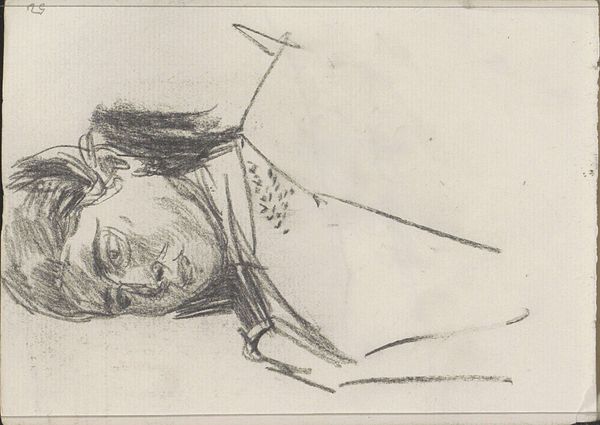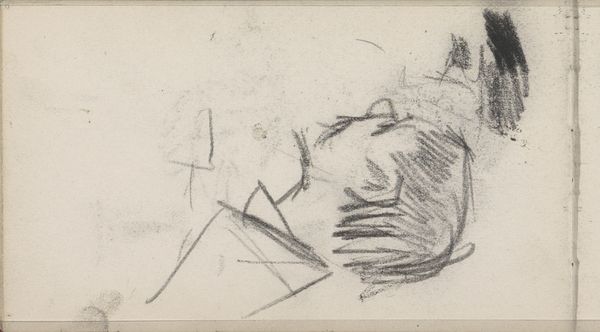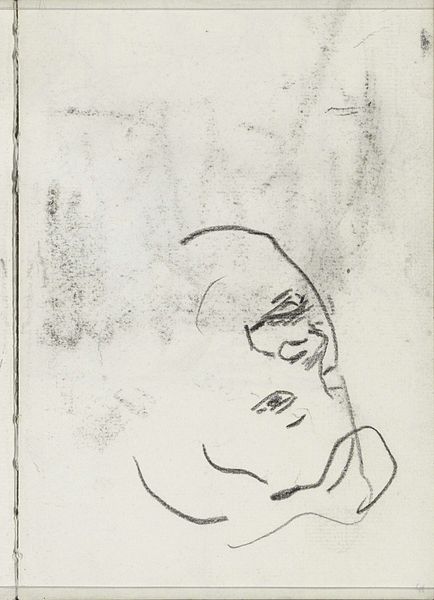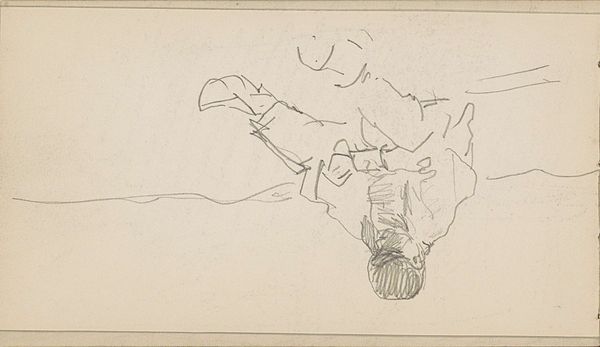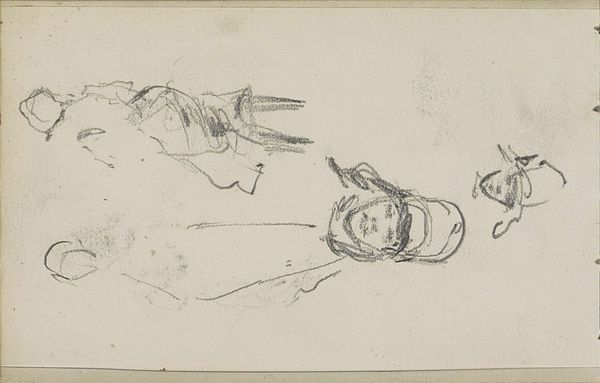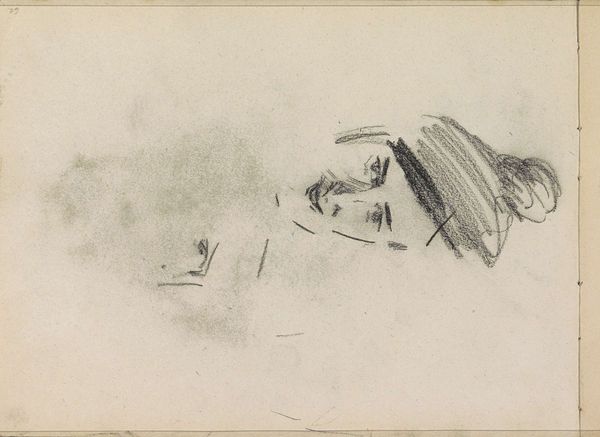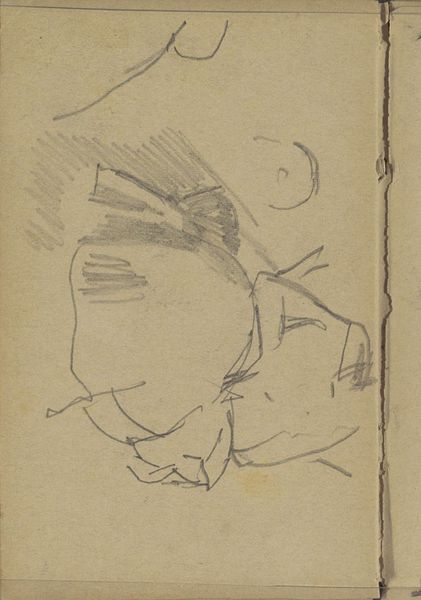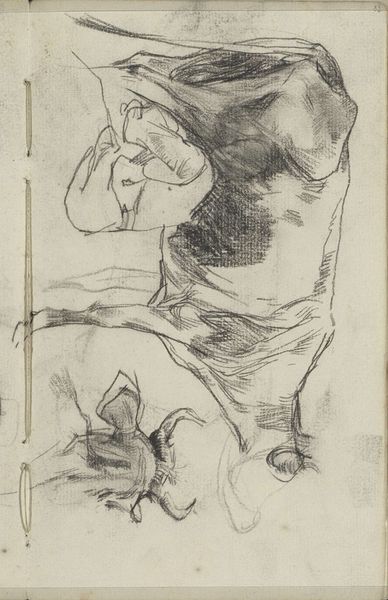
Copyright: Rijks Museum: Open Domain
Editor: This drawing, "Vrouwenhoofd" by Isaac Israels, made sometime between 1875 and 1934, uses pencil on paper. It has a very fleeting quality, almost as if the artist captured a mere impression of the subject. How do you interpret this work? Curator: Note how Israels employs a rapid, almost gestural technique. Observe the visible pencil strokes and the varying pressure applied, building volume and shadow, while, at the same time, allowing for significant areas of the paper to remain untouched. It’s a study in contrasts – mass against void. Editor: It's interesting how the incompleteness of the drawing becomes a defining feature. Why do you think he left so much blank space? Curator: Consider the intentionality. Is this 'unfinished' state a reflection of the artist’s engagement with capturing light and form, prioritizing the immediacy of the impression over meticulous detail? The absence of rigid lines and the embrace of open space contribute significantly to the drawing’s expressiveness, wouldn’t you agree? Editor: Yes, it creates a sense of movement, of a subject caught in a moment. It also highlights the pure form, distilled through minimal elements. Curator: Precisely. By stripping away excess detail, the focus is sharpened on the interplay between line, tone, and the inherent qualities of the medium itself. It allows for an intimate, direct connection with the artist's process. Editor: I see it now - less about the woman as an individual, and more about the artist exploring the capabilities of pencil on paper. Thanks for pointing that out! Curator: My pleasure. These formal relationships often reveal as much, if not more, than any overt subject matter might.
Comments
No comments
Be the first to comment and join the conversation on the ultimate creative platform.
